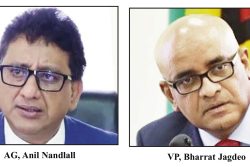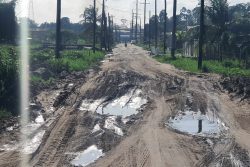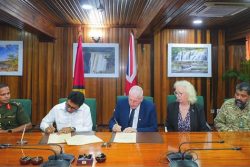Starting March 1 and continuing for at least the next 3 months, Guyanese will pay 10% less for the electricity they consume. President Donald Ramotar was the one to make the ‘announcement’ on Monday at the commissioning of the Vreed-en-Hoop US$35 million power plant. However, he did not reveal the finer details like the timeframe; this was done on Tuesday during a press conference presided over by Guyana Power and Light Chairman Winston Brassington. The 10% decrease in tariffs is less significant than the 30% reduction in the prices of fuel purchased at the pump, which had been announced by Finance Minister Dr Ashni Singh on January 19, in terms of its impact on the pocket of the average citizen. The announcement has also raised the trepidation among many that the Guyana Power and Light might be forced to compensate with increased power outages.
Both announcements, while hoped for and welcomed, were definitely at odds with what had been emanating from the Cabinet just prior to this. The impression was that the left hand did not know what the right hand was doing, or that there was forcing of the hand or sleight of hand at work. It was clear that not all hands were on deck where these reductions were concerned.
On January 18, just one day before Dr Singh made the announcement of the 30% reduction on the price of gas, diesel and kerosene purchased at the government-owned GuyOil gas stations, this newspaper carried a story in which Prime Minister Samuel Hinds said that government was not about to intervene to ensure that consumers benefited from falling oil prices. He was quoted directly as saying: “Government is hoping that the ‘market’ will work adequately and government would not need to intervene.” In fact, the government had been so determined to keep the fuel price situation as is that back in November 2014, when the world price for crude oil showed a serious decline, government reacted by adjusting the excise tax on fuel upwards.
But lo and behold, on January 19, Dr Singh issued a press statement announcing the decrease. There was no explanation by Dr Singh with regard to PM Hinds’s comments published just the day before, nor did the PM attempt subsequently to clear the air.
With that reduction made, local pundits and even the ordinary man in the street begin to hint at what must be the logical next step: a lowering of public transportation fares and electricity tariffs.
It is well-known that government has no control over public transportation, save and except for the ferries attached to the Transport and Harbours Department. The administration’s attitude to the providers of public transport (minibuses and taxis) has been dictatorial for the most part. Standards and regulations that should govern the operations of minibuses have for the most part been observed in the breach. Many drivers have thumbed their noses at these and continue to overload buses, play loud and lewd music and not follow designated routes. Campaign clampdowns only last for a period before it’s back to square one. Whereas, were breaches dealt with condignly across the board from day one, this sector would have been in much better shape today. As regards taxis, one remembers only too well, former president Bharrat Jagdeo’s ‘one-colour-cab’ directive of 2009, which eventually saw almost all taxis being painted yellow. So far, the operators in this sector have resisted the fare drop calls.
With regard to GPL, on January 23, at his post-Cabinet press briefing, Head of the Presidential Secretariat Dr Roger Luncheon had said that consumers should not expect a reduction in their bills. This newspaper quoted him as saying, “It seems logical that prices for fuel have fallen significantly and therefore fuel-based products would be expected to have their prices fall too; perhaps in the real world this may be so but we have to understand that GPL is a peculiar creature.”
Dr Luncheon also referred to the heavy subsidy government pays to GPL: “In essence if there were some mutual situation where there was a flow through from prices of fuel to the prices we pay for electricity then tariffs would be off the map… it does not… because of the subsidy government provides… billions of dollars worth of subsidy.”
Yet, just over two weeks later, President Ramotar announced the 10% decrease, followed by Mr Brassington’s caution that this would be reviewed quarterly. It was reported that GPL still averages its cost per barrel at US$70, while the world price at present fluctuates between US$50 and US$56; the local price possibly includes freight and other costs.
Still the lack of sync in what has been emanating from the Office of the President and the other echelons of government over the fuel situation is the sort of thing that makes one go, hmmm.







